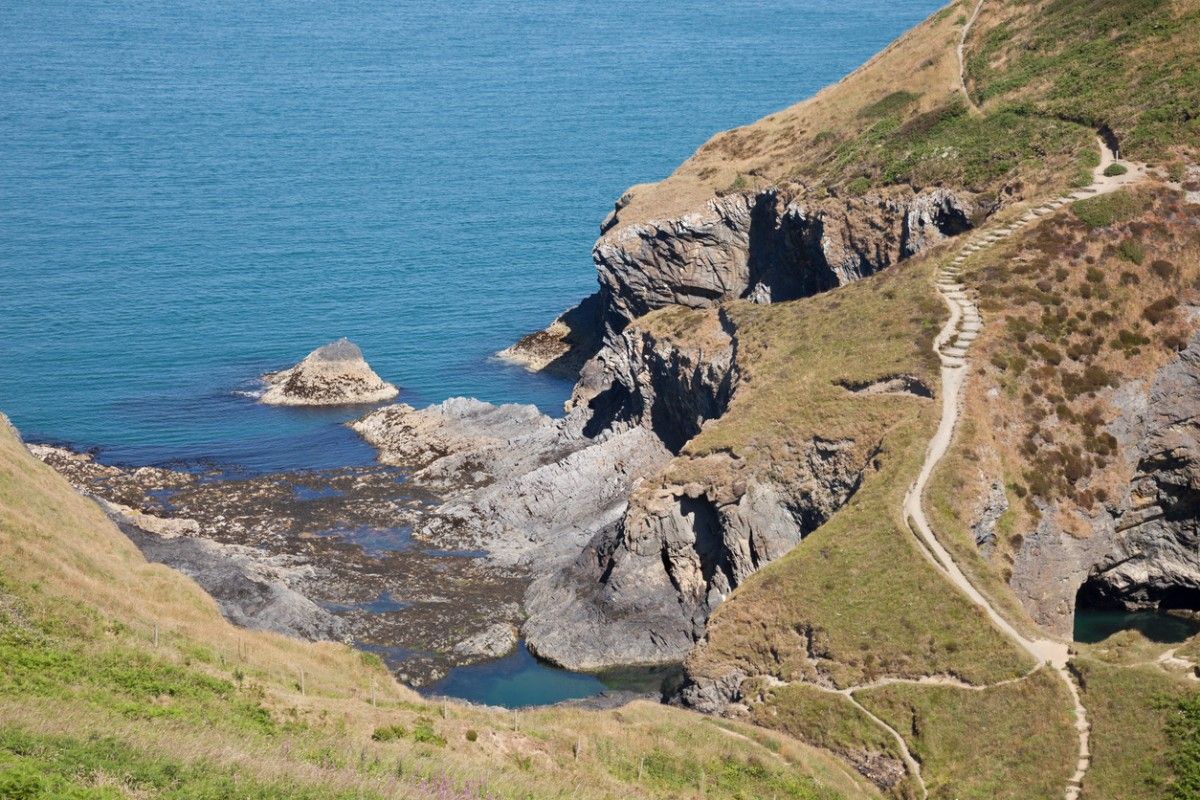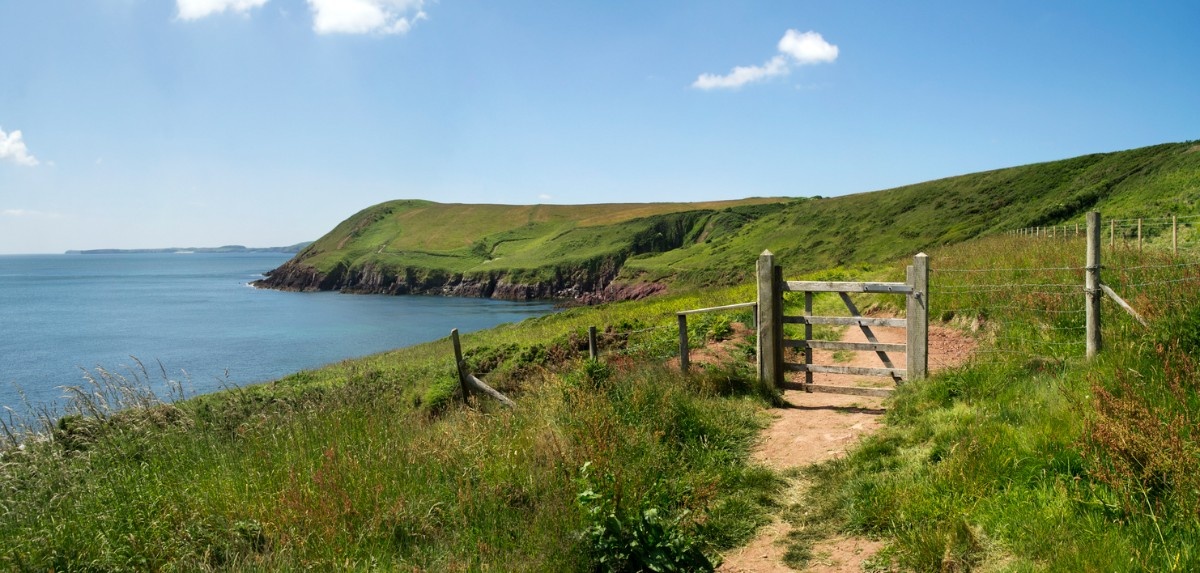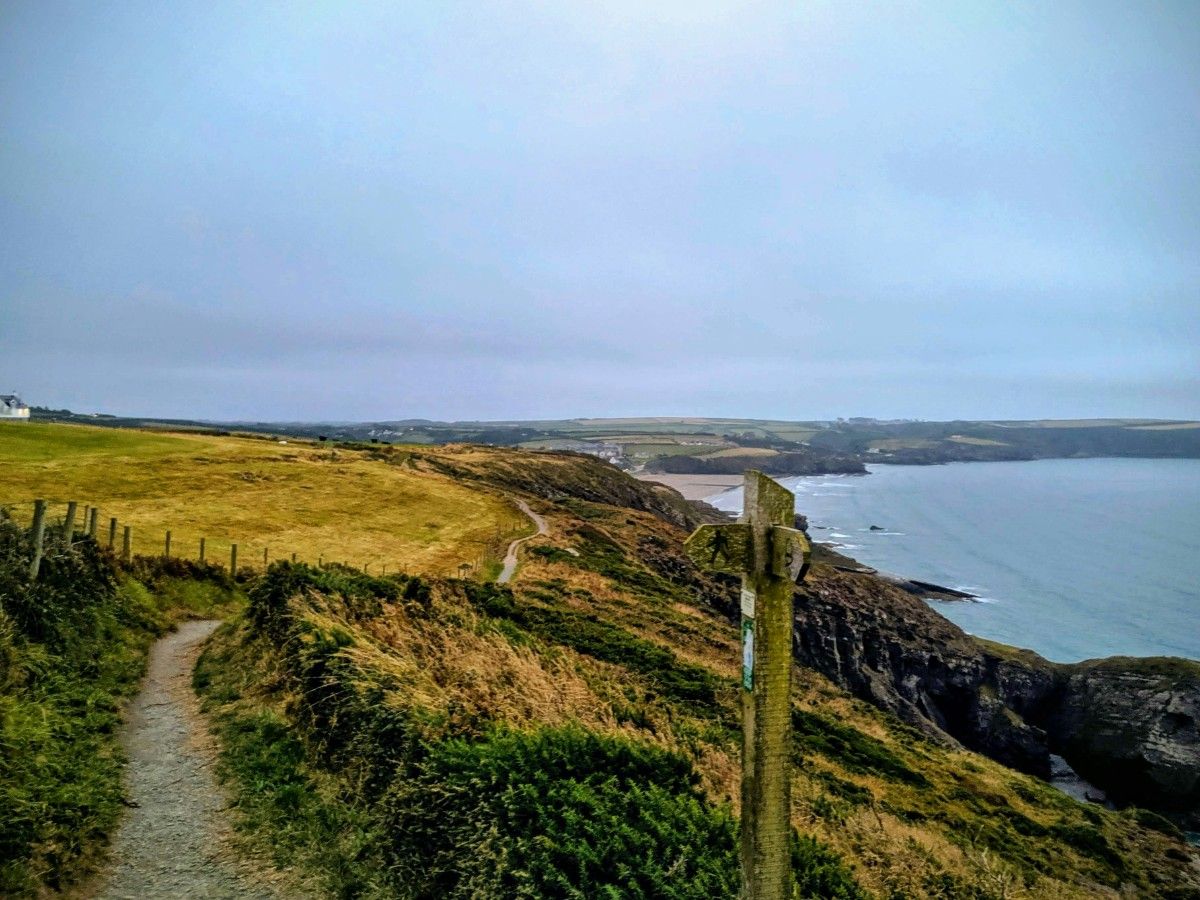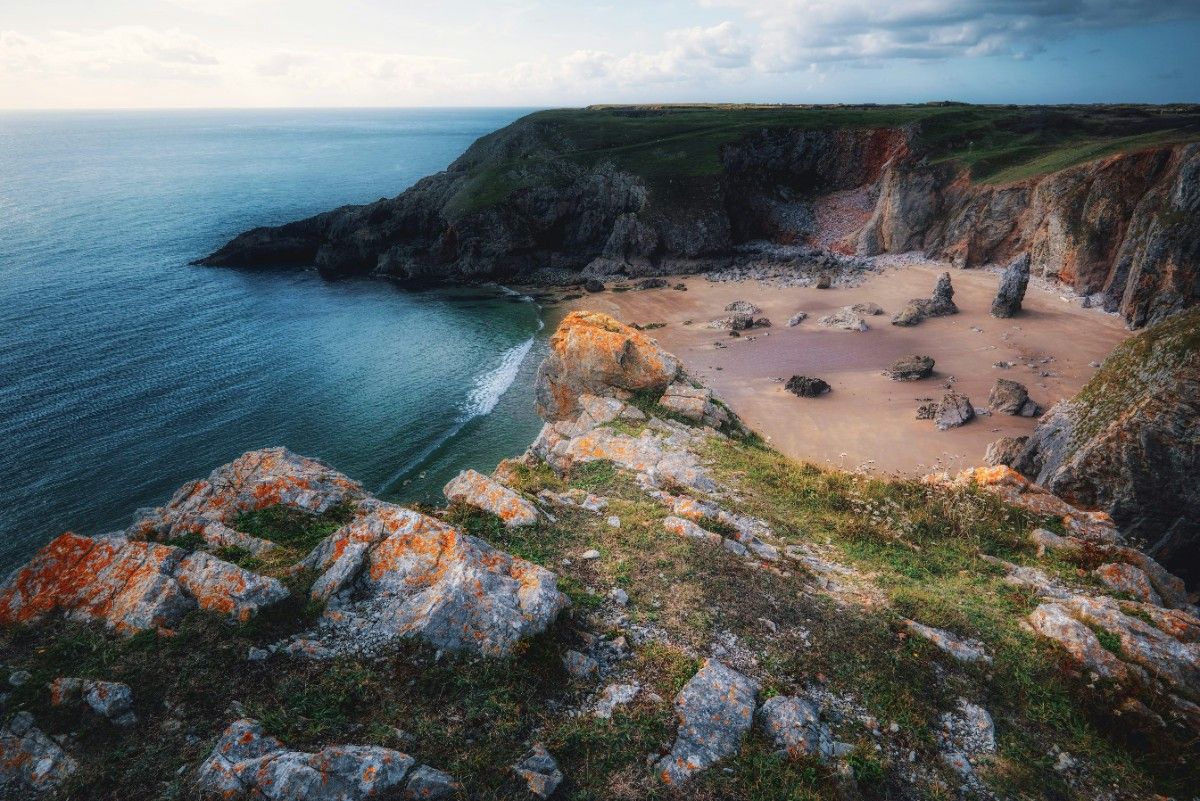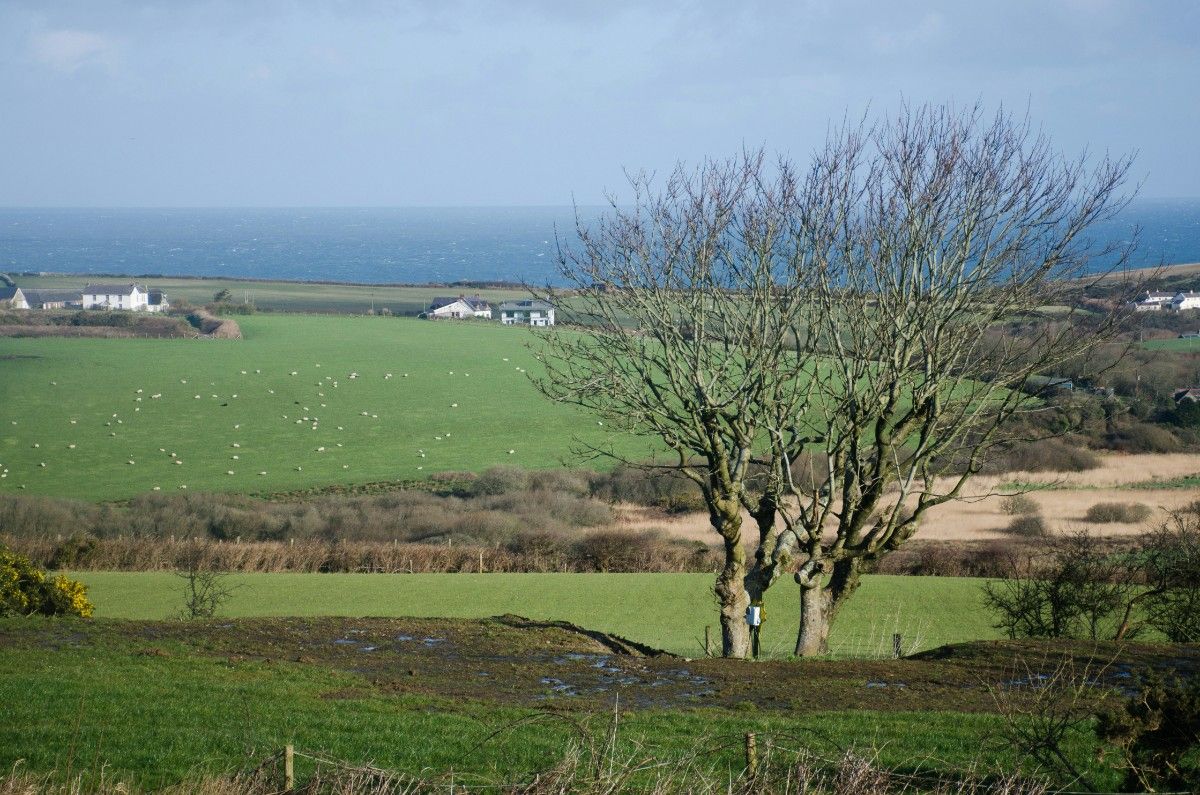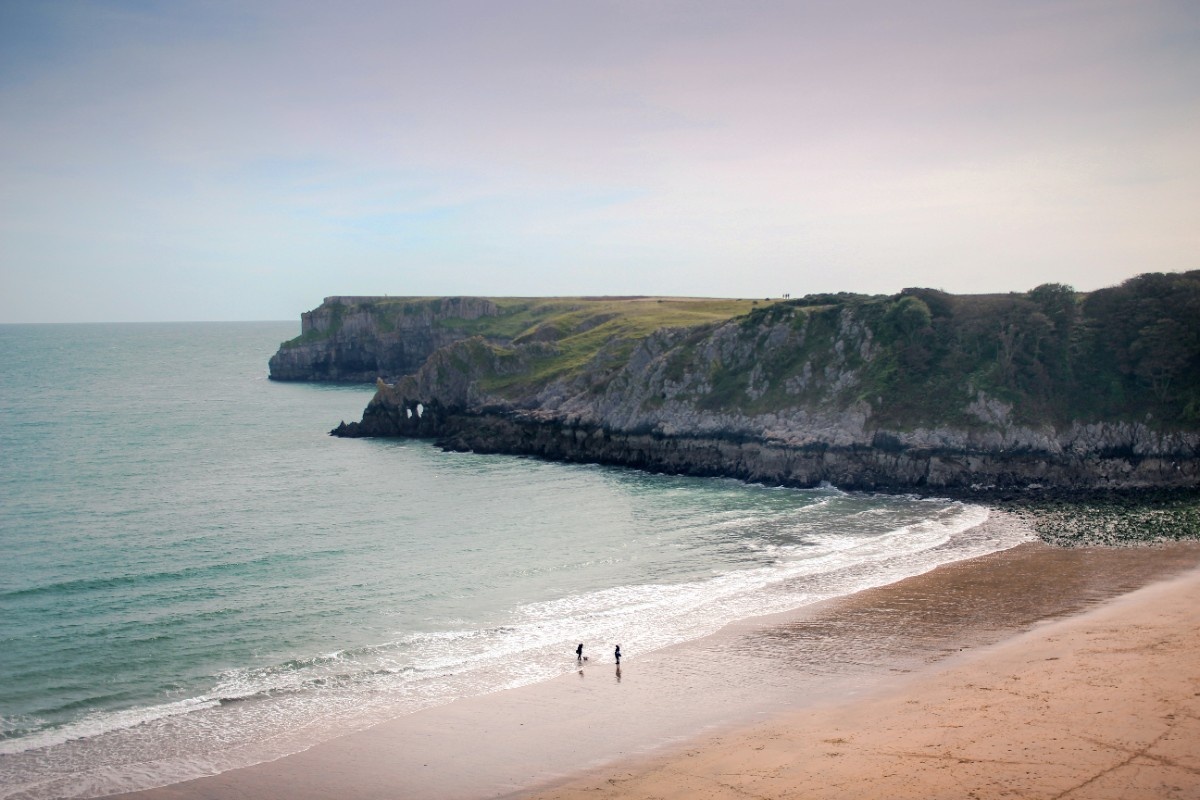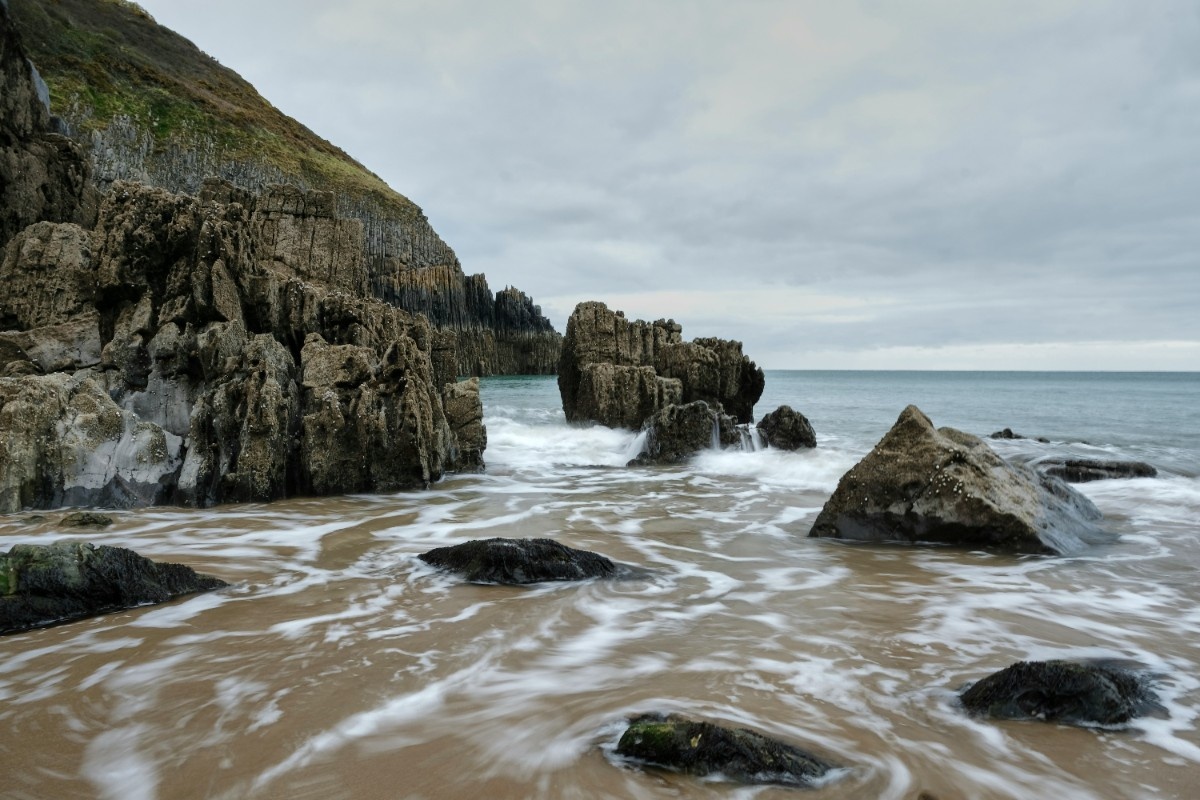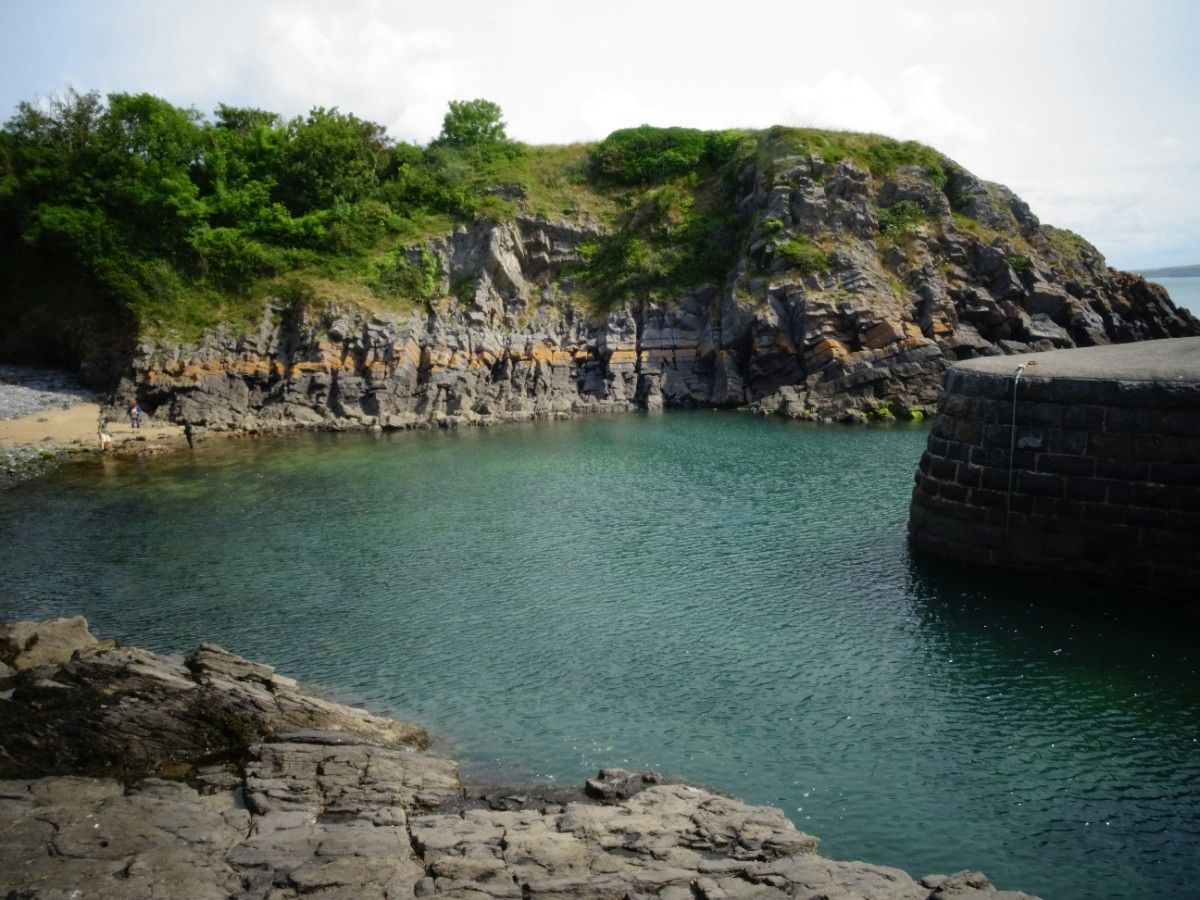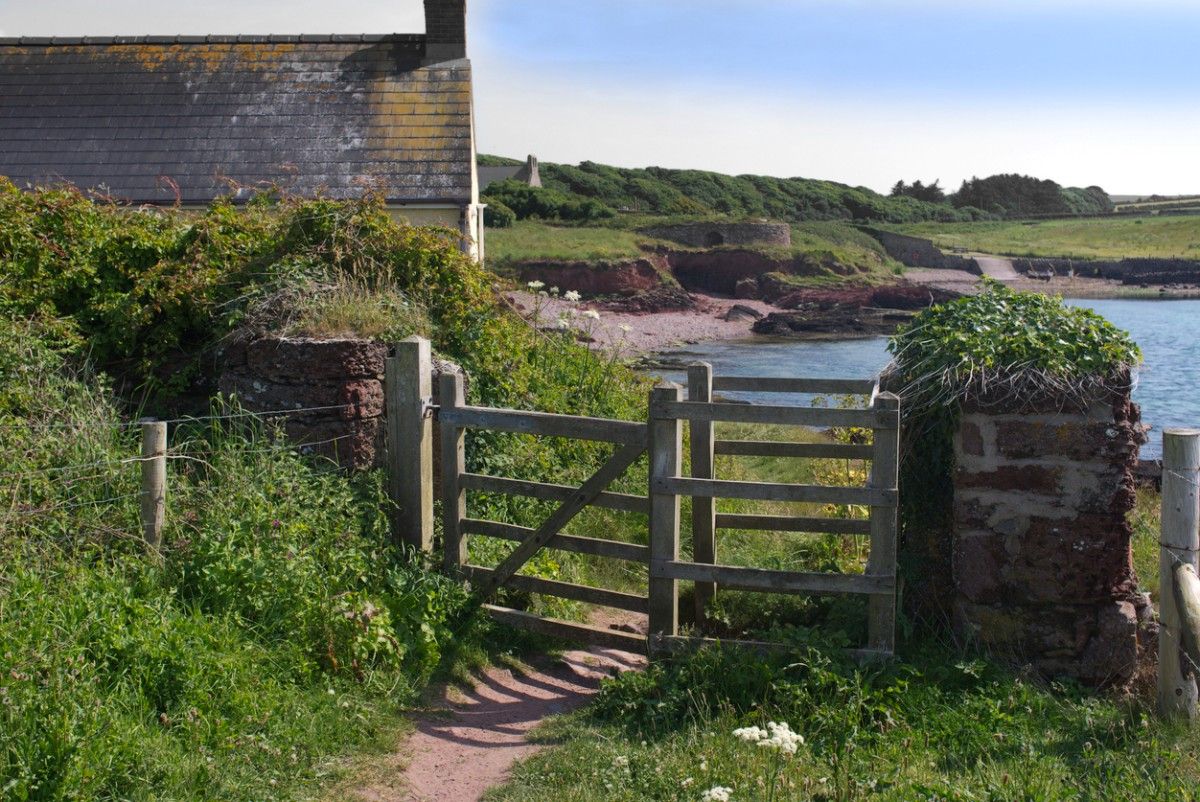Introduction to the Pembrokeshire Coast Path
Overview of the Pembrokeshire Coast Path
The Pembrokeshire Coast Path is a stunning 186-mile (299 km) long-distance walking trail located in the beautiful county of Pembrokeshire, South West Wales. This breathtaking path stretches from Amroth in the south to St Dogmaels in the north, offering hikers an unparalleled opportunity to explore the rugged coastline, hidden coves, and picturesque villages that make this region so special. As part of the larger Wales Coast Path and the International Appalachian Trail, the Pembrokeshire Coast Path has gained recognition as one of the world's most spectacular hiking routes.
Established in 1970, the path is managed by the Pembrokeshire Coast National Park Authority, ensuring its conservation and accessibility for walkers from all over the globe. The diverse landscapes encountered along the way include towering limestone cliffs, golden sandy beaches, and lush, wildflower-strewn meadows. Hikers can also marvel at impressive geological features such as the Green Bridge of Wales and the Stack Rocks, testaments to the power of the sea and the ever-changing nature of the coastline.
The Pembrokeshire Coast Path is not just a feast for the eyes; it also offers an abundance of wildlife spotting opportunities. From seabirds soaring above the cliffs to seals basking on the beaches and dolphins playing in the waves, the path is a nature lover's paradise. Whether you choose to walk the entire route or explore smaller sections, the Pembrokeshire Coast Path promises an unforgettable experience that will leave you in awe of the natural beauty and rich heritage of this remarkable corner of Wales.
History and Significance of the Path
The Pembrokeshire Coast Path has a rich history that dates back centuries. The rugged coastline has been shaped by both natural forces and human activity, with evidence of prehistoric settlements, medieval castles, and industrial heritage scattered along the route. The path itself was born out of the need to protect and preserve this unique landscape, as well as to provide access for the public to enjoy its beauty.
In the early 20th century, the Pembrokeshire coast was recognised as an area of outstanding natural beauty, and efforts began to safeguard it from development and damage. The establishment of the Pembrokeshire Coast National Park in 1952 was a significant milestone in this process, as it provided a legal framework for the conservation and management of the area.
The creation of the Pembrokeshire Coast Path in 1970 was another important step in protecting and promoting the coastline. By linking existing footpaths and bridleways, the path provided a continuous route along the coast, allowing hikers to experience the beauty and diversity of the landscape in a sustainable and low-impact way.
Today, the Pembrokeshire Coast Path is not only a beloved recreational resource but also a vital contributor to the local economy. The path attracts thousands of visitors each year, supporting jobs in the tourism and hospitality sectors and providing a boost to local businesses. The path has also become an important educational resource, with schools and organisations using it to teach about the environment, history, and culture of the region.
Furthermore, the Pembrokeshire Coast Path has gained international recognition for its outstanding beauty and the quality of the hiking experience it offers. In 2011, National Geographic named it one of the world's top ten coastal destinations, and it has been featured in numerous travel publications and media outlets.
As a result, the Pembrokeshire Coast Path has become more than just a walking trail; it is a symbol of the enduring value and importance of our natural heritage, and a testament to the power of conservation and sustainable tourism to protect and promote the world's most special places.
Planning Your Hike on the Pembrokeshire Coast Path
Choosing Your Route and Itinerary
When planning your hike on the Pembrokeshire Coast Path, the first step is to decide on the length of your walk and the specific sections you wish to cover. The path is divided into 15 stages, each ranging from 5 to 16 miles (8 to 26 km) in length, allowing you to tailor your itinerary to your fitness level, time constraints, and personal preferences.
If you're looking to complete the entire path, you'll need to allocate 10 to 15 days, depending on your pace and the number of rest days you plan to take. This option is perfect for experienced hikers who are comfortable with longer distances and more challenging terrain.
For those with limited time or who prefer a more relaxed pace, focusing on shorter sections of the path may be more appealing. Some popular options include the northern section from St Dogmaels to Newport, which takes in the dramatic cliffs and secluded beaches of Cardigan Bay, or the southern stretch from Amroth to Barafundle Bay, known for its picture-perfect sandy coves and historic sites like Pembroke Castle.
When planning your route, it's also important to consider the location of amenities and accommodation along the way. While the Pembrokeshire Coast Path is well-served by towns and villages, some sections are more remote than others, so it's essential to plan your overnight stops and resupply points accordingly.
To help you create your ideal itinerary, consult the official Pembrokeshire Coast Path guidebook and map, which provide detailed information on each stage of the route, as well as recommendations for accommodation, transport, and local attractions. You can also find a wealth of online resources, including blogs and forums, where experienced hikers share their tips and insights on walking the path.
Preparing for Your Hike: Essential Gear and Safety Considerations
Once you've settled on your route and itinerary, the next step in planning your hike on the Pembrokeshire Coast Path is to ensure you have the right gear and equipment to keep you safe and comfortable on the trail.
At a minimum, you'll need a sturdy pair of hiking boots with good ankle support and a reliable waterproof jacket and trousers to protect you from the elements. The Pembrokeshire weather can be changeable, even in summer, so it's also a good idea to pack warm layers, a hat, and gloves.
Other essential items include a high-quality backpack to carry your gear, a hydration system or water bottles, and a first-aid kit with blister treatment and any personal medications you require. Don't forget to pack sun protection, too, as the coastal sun can be intense, especially when reflected off the sea and cliffs.
Navigation is another key consideration when hiking the Pembrokeshire Coast Path. While the route is generally well-signposted and easy to follow, it's still important to carry a map and compass, or a GPS device, in case of unexpected diversions or poor visibility. Familiarise yourself with the route before setting out, and make sure you know how to use your navigation tools effectively.
In addition to your physical preparation, it's crucial to consider the safety aspects of hiking the Pembrokeshire Coast Path. The coastal terrain can be challenging, with steep cliffs, slippery rocks, and fast-changing tides. Always stay on the designated path, keep a safe distance from cliff edges, and be aware of the tide times and weather conditions before setting out.
It's also a good idea to let someone know your planned route and expected return time, and to carry a fully charged mobile phone in case of emergencies. In the event of an accident or injury, dial 999 and ask for the coastguard, who are trained to respond to incidents on the coastal path.
By taking the time to properly prepare for your hike, you can ensure a safe and enjoyable experience on the Pembrokeshire Coast Path. Whether you're a seasoned hiker or a first-time walker, the key is to be well-informed, well-equipped, and always prioritise your safety and well-being on the trail.
Highlights of the Pembrokeshire Coast Path
Natural Wonders and Scenic Beauty
The Pembrokeshire Coast Path is renowned for its stunning natural beauty and diverse landscapes, offering hikers a wealth of unforgettable experiences along the way. One of the path's most iconic features is the Green Bridge of Wales, a spectacular natural arch formed by the relentless action of the sea. Located near the remote Castlemartin Range, this geological marvel is a testament to the raw power of nature and a must-see for any walker on the path.
Another highlight of the Pembrokeshire Coast Path is Barafundle Bay, a secluded beach often hailed as one of the most beautiful in the world. Nestled between rugged cliffs and accessible only by foot, this pristine sandy cove is a true hidden gem. The crystal-clear waters and golden sands of Barafundle Bay provide a perfect spot for a refreshing swim or a peaceful picnic during your hike.
The path also showcases the incredible biodiversity of the Pembrokeshire coast, with opportunities to spot rare flora and fauna along the way. The clifftops are home to a variety of seabirds, including puffins, guillemots, and razorbills, while the coastal waters are frequented by seals, dolphins, and even the occasional whale. Inland, hikers can explore the lush woodlands and wildflower meadows, such as the enchanting Bosherston Lily Ponds, where otters and water birds thrive amidst the tranquil beauty of the ponds.
Other natural wonders along the path include the dramatic Elegug Stacks, a series of towering sea stacks near St David's Head, and the picturesque Caerfai Bay, where the multi-coloured cliffs and rock formations create a striking visual contrast against the turquoise waters of the bay.
With its endless variety of breathtaking landscapes and abundant wildlife, the Pembrokeshire Coast Path offers a truly immersive and unforgettable experience for nature lovers and outdoor enthusiasts alike.
Historical and Cultural Sites
In addition to its natural beauty, the Pembrokeshire Coast Path is also steeped in history and culture, with numerous fascinating sites and landmarks to discover along the route. One of the most impressive historical attractions is Pembroke Castle, a magnificent medieval fortress that has played a significant role in shaping the history of Wales and the United Kingdom. The birthplace of Henry VII, founder of the Tudor dynasty, Pembroke Castle is a well-preserved example of Norman architecture and offers stunning views of the surrounding countryside and the Milford Haven Waterway.
Another notable historical site along the path is St Non's Chapel, a small, stone chapel believed to be the birthplace of St David, the patron saint of Wales. Located just south of the city of St David's, this peaceful spot is a popular pilgrimage site and offers a glimpse into the rich religious heritage of the region.
Hikers on the Pembrokeshire Coast Path can also explore the historic town of Newport, with its charming Georgian architecture and medieval castle ruins, or visit the picturesque fishing village of Porthgain, where the remnants of the industrial past, including old quarries and brickworks, blend seamlessly with the natural beauty of the coast.
For those interested in prehistoric history, the path passes near several ancient sites, such as the Neolithic burial chamber of Carreg Samson, and the Bronze Age stone circles of Gors Fawr and Bedd Arthur. These enigmatic monuments offer a fascinating glimpse into the lives and beliefs of the early inhabitants of the Pembrokeshire coast.
Throughout your journey on the Pembrokeshire Coast Path, you'll encounter a rich tapestry of history and culture, from ancient sacred sites and medieval castles to charming fishing villages and industrial heritage. These diverse cultural landmarks add depth and meaning to the hiking experience, connecting walkers with the stories and traditions that have shaped this remarkable landscape over the centuries.
Exploring St Davids and Whitesands Bay
The City of St Davids
The city of St Davids is a highlight of the Pembrokeshire Coast Path and a must-visit destination for any hiker exploring this stunning region. Despite its city status, St Davids is actually a charming and compact settlement, holding the title of the smallest city in the United Kingdom. At the heart of the city lies the magnificent St Davids Cathedral, a 12th-century architectural gem that has been a place of worship and pilgrimage for over 1,500 years.
The cathedral, with its intricate carvings, stained glass windows, and soaring vaulted ceilings, is a testament to the rich religious history of the area and a beloved symbol of Welsh heritage. Adjacent to the cathedral, visitors can explore the ruins of the Bishop's Palace, a 14th-century residence that once housed the powerful bishops of St Davids.
Beyond its historical and religious significance, St Davids is also a vibrant and welcoming community, with a range of independent shops, cafes, and galleries to explore. The city is home to a thriving arts and crafts scene, with local artists and artisans showcasing their work in the many studios and workshops scattered throughout the town.
For hikers on the Pembrokeshire Coast Path, St Davids serves as an ideal base for exploring the surrounding coastline, with a range of accommodation options, from cozy bed and breakfasts to self-catering cottages and campsites. The city also offers excellent dining options, with a focus on locally-sourced, seasonal produce and fresh seafood from the nearby coast.
Whether you're seeking spiritual solace, historical insight, or simply a charming and friendly place to rest and recharge during your hike, the city of St Davids is sure to leave a lasting impression and form a highlight of your journey along the Pembrokeshire Coast Path.
Whitesands Bay and St David's Head
Just a short distance from the city of St Davids lies the breathtaking expanse of Whitesands Bay, a wide, sandy beach that is a favourite among surfers, swimmers, and beachgoers. This stunning stretch of coastline, backed by grassy dunes and flanked by rocky headlands, offers a perfect spot for a relaxing day by the sea or an invigorating walk along the shore.
Whitesands Bay is also the starting point for several circular walks that showcase the rugged beauty of the surrounding coastline. One of the most popular routes is the trek to St David's Head, a dramatic headland that offers panoramic views of the Irish Sea and the distant peaks of the Preseli Hills.
The path to St David's Head takes hikers along the clifftops, past ancient stone ramparts and the site of an Iron Age fort, before descending to the rocky promontory at the tip of the headland. From here, on a clear day, you can see across to Ramsey Island, a protected wildlife haven that is home to seals, porpoises, and a variety of seabirds.
For those interested in the area's prehistoric past, the nearby Coetan Arthur burial chamber is a fascinating site to visit. This Neolithic dolmen, believed to date back over 5,000 years, consists of a large capstone balanced on upright stones and is one of the most impressive megalithic monuments in Wales.
After a day of exploring the natural and historical wonders of Whitesands Bay and St David's Head, hikers can refuel and relax at one of the many excellent pubs, cafes, and restaurants in the city of St Davids. From traditional Welsh fare to fresh, locally-caught seafood, there is something to suit every taste and budget.
With its stunning coastal scenery, rich history, and warm, welcoming atmosphere, the area around St Davids and Whitesands Bay is a true gem of the Pembrokeshire Coast Path, offering hikers an unforgettable experience that combines natural beauty, cultural heritage, and the very best of Welsh hospitality.
Wildlife Watching on the Pembrokeshire Coast Path
Seabirds and Coastal Birdlife
One of the greatest joys of walking the Pembrokeshire Coast Path is the opportunity to observe the incredible variety of birdlife that calls this rugged coastline home. The towering cliffs and offshore islands provide the perfect habitat for countless seabirds, making the path a true paradise for bird enthusiasts and nature lovers alike.
Among the most iconic species found along the path are the charismatic Atlantic puffins, with their colourful beaks and comical expressions. These charming birds can be spotted nesting on the grassy slopes and rocky ledges of the cliffs from April to July, with Skomer Island and Skokholm Island being particularly renowned for their large puffin colonies.
Other seabirds that can be commonly sighted along the Pembrokeshire Coast Path include guillemots, razorbills, and gannets. The distinctive black-and-white plumage of the guillemots and razorbills makes them easy to identify as they perch on the cliffs or dive into the sea in search of food. Gannets, with their impressive wingspans and dramatic plunge-diving behaviour, are another thrilling sight, especially when observed from the coastal headlands or during a boat trip offshore.
In addition to seabirds, the Pembrokeshire coast is also home to a wide variety of other birdlife, including peregrine falcons, choughs, and stonechats. The peregrine falcon, known for its incredible speed and hunting prowess, can sometimes be seen soaring above the cliffs or perching on rocky outcrops, while the chough, a rare and acrobatic member of the crow family, is often spotted foraging for insects in the coastal grasslands.
For keen birdwatchers, the Pembrokeshire Coast Path offers an unparalleled opportunity to observe these fascinating creatures in their natural habitat. By bringing a pair of binoculars, a field guide, and a healthy dose of patience and respect for the birds' well-being, walkers can enjoy unforgettable encounters with the feathered residents of this spectacular coastline.
Marine Mammals and Coastal Wildlife
In addition to its incredible birdlife, the Pembrokeshire Coast Path is also renowned for its diverse array of marine mammals and coastal wildlife. The waters off the Pembrokeshire coast are home to several species of dolphins, porpoises, and seals, as well as the occasional passing whale, making the path a must-visit destination for anyone interested in these captivating creatures.
One of the most commonly sighted marine mammals along the path is the harbour porpoise, a small, shy species that can often be spotted close to shore, especially in the quieter bays and inlets. Bottlenose dolphins, known for their playful and social behaviour, are another frequent sight, with pods sometimes approaching boats or riding the waves alongside surfers and kayakers.
For those hoping to catch a glimpse of these elusive animals, the best spots along the Pembrokeshire Coast Path include Strumble Head, Ramsey Island, and New Quay Bay, where the sheltered waters and rich food sources attract a variety of marine life.
The Pembrokeshire coast is also home to a thriving population of Atlantic grey seals, with several important haul-out sites and breeding colonies scattered along the path. The most notable of these is the Marloes Peninsula, where hundreds of seals can be observed basking on the rocks or swimming in the shallow waters, especially during the autumn pupping season.
In addition to marine mammals, the Pembrokeshire Coast Path also offers the chance to encounter a wealth of other coastal wildlife, from the colourful wildflowers and butterflies of the cliff-top meadows to the darting lizards and basking adders of the rocky shores. The tidal rock pools and sandy beaches are also home to a fascinating array of marine life, including crabs, anemones, and starfish, waiting to be discovered by curious walkers and nature enthusiasts.
By keeping a keen eye and an open mind, those exploring the Pembrokeshire Coast Path can enjoy an extraordinary wealth of wildlife encounters, from the majestic seabirds soaring overhead to the playful dolphins and seals frolicking in the waves below. These unforgettable experiences serve as a powerful reminder of the incredible diversity and resilience of the natural world, and the vital importance of protecting and preserving these precious coastal habitats for generations to come.
Geology and Landscape of the Pembrokeshire Coast
Ancient Rocks and Geological Formations
The Pembrokeshire Coast Path traverses a landscape that is as geologically fascinating as it is visually stunning, with a complex history spanning hundreds of millions of years. The ancient rocks and unique formations encountered along the path offer a captivating glimpse into the dynamic processes that have shaped this remarkable coastline over time.
One of the most striking geological features of the Pembrokeshire coast is its dramatic cliffs, which showcase a diverse array of rock types and formations. The towering limestone cliffs that dominate much of the southern section of the path, such as those at Stackpole and Lydstep Head, are composed of the fossilised remains of marine creatures that thrived in the warm, shallow seas of the Carboniferous period some 300 million years ago. These rocks are characterised by their distinctive grey colour and layered appearance, with numerous caves, arches, and sea stacks carved out by the relentless action of the waves.
In contrast, the northern stretches of the path, particularly around St David's Head and Strumble Head, are underlain by much older, Precambrian rocks, some of which date back over 600 million years. These ancient rocks, which include volcanic tuffs, sandstones, and mudstones, have been subjected to intense pressures and temperatures over time, resulting in a complex mosaic of folded and contorted strata that tell a fascinating story of the Earth's early history.
Other notable geological features along the Pembrokeshire Coast Path include the spectacular sea stacks and natural arches that punctuate the coastline, such as the Green Bridge of Wales and Stack Rocks. These iconic landmarks are formed by the differential erosion of the cliffs, with harder, more resistant rock layers remaining as isolated pillars or bridges while the softer surrounding material is worn away by the sea.
For those with a keen eye and a curiosity for the Earth's history, the Pembrokeshire Coast Path offers an unparalleled opportunity to explore and appreciate the intricate geological story of this remarkable landscape. From the ancient, twisted rocks of the north to the fossil-rich limestone cliffs of the south, every step along the path reveals new insights and wonders, inviting walkers to marvel at the incredible forces that have shaped our planet over millions of years.
Coastal Landforms and Geomorphology
In addition to its fascinating geological history, the Pembrokeshire Coast Path also showcases an incredible diversity of coastal landforms and geomorphological features, each telling a unique story of the dynamic interplay between land and sea.
One of the most prevalent and visually striking landforms along the path are the numerous headlands and bays that punctuate the coastline. These features are the result of the differential erosion of the coast, with the harder, more resistant rocks forming the protruding headlands while the softer, more easily eroded materials are worn away to create the sheltered coves and sandy beaches in between.
The Pembrokeshire coast is also renowned for its impressive wave-cut platforms, broad, flat surfaces of rock that have been abraded and levelled by the constant action of the waves. These platforms, which are often exposed at low tide, offer a fascinating glimpse into the ongoing processes of coastal erosion and the resilience of the underlying bedrock.
Another notable geomorphological feature of the Pembrokeshire Coast Path are the numerous sea caves and blowholes that riddle the cliffs. These intricate networks of passages and chambers are formed by the relentless pounding of the waves, which exploit weaknesses in the rock such as joints, bedding planes, and faults. Over time, these small cracks and fissures are gradually widened and deepened, creating the spectacular caverns and tunnels that can be explored by intrepid walkers and kayakers.
The Pembrokeshire coast is also home to several important coastal wetlands and estuaries, such as the Cleddau Estuary and the Teifi Marshes. These unique habitats, formed by the interaction of freshwater rivers and the tidal influence of the sea, support a rich diversity of plant and animal life, including rare and specialised species adapted to the constantly changing conditions of the intertidal zone.
For those with an interest in the dynamic processes that shape our coastlines, the Pembrokeshire Coast Path offers an unrivalled opportunity to witness the power and beauty of the sea in action. From the towering cliffs and rugged headlands to the intricate sea caves and tidal estuaries, every mile of the path reveals new insights and wonders, inviting walkers to marvel at the incredible forces that have sculpted this remarkable landscape over countless millennia.
Cultural Heritage and Local Communities
Historic Sites and Monuments
The Pembrokeshire Coast Path is not only a showcase of natural beauty but also a journey through the rich cultural heritage and history of this fascinating region. Dotted along the path are numerous historic sites and monuments that offer a glimpse into the lives and traditions of the people who have called this coast home for countless generations.
One of the most iconic historic landmarks on the path is Pembroke Castle, a majestic medieval fortress that has played a pivotal role in the history of Wales. Built in the 11th century by the Normans, the castle was the birthplace of Henry VII, the first Tudor king of England, and has been the scene of many battles and sieges over the centuries. Today, visitors can explore the castle's imposing towers, battlements, and great hall, and learn about its fascinating history through interactive exhibits and guided tours.
Another important historic site along the path is St Non's Chapel, a small, stone chapel near St David's that marks the birthplace of St David, the patron saint of Wales. According to legend, St Non, David's mother, gave birth to him on this spot during a violent thunderstorm in the 6th century. The chapel, which dates back to the 13th century, is a peaceful and contemplative spot, offering stunning views of the coast and a chance to connect with the spiritual heritage of the region.
The Pembrokeshire Coast Path also passes through several charming coastal villages and towns, each with its own unique history and character. The picturesque harbour town of Tenby, with its colourful Georgian houses and ancient town walls, is a delight to explore, while the village of Solva, with its quaint fishermen's cottages and traditional lime kilns, offers a glimpse into the maritime heritage of the area.
Other notable historic sites along the path include the Iron Age hill fort of Castell Henllys, the Celtic monastery of St Dogmael's Abbey, and the Victorian lighthouse of Strumble Head. Each of these landmarks adds depth and richness to the walking experience, inviting visitors to imagine the lives and stories of the countless generations who have shaped this remarkable landscape over time.
Contemporary Culture and Community Life
In addition to its rich history and heritage, the Pembrokeshire Coast Path also offers a fascinating glimpse into the contemporary culture and community life of this unique region. The path passes through numerous towns and villages where visitors can experience the warm hospitality, traditional crafts, and vibrant arts scene of modern-day Pembrokeshire.
One of the most distinctive aspects of Pembrokeshire culture is the strong tradition of storytelling and folklore that still thrives in many of the coastal communities. From tales of mythical creatures and ancient legends to stories of shipwrecks and smugglers, the oral traditions of Pembrokeshire are a fascinating window into the imagination and identity of the local people. Visitors can experience this rich storytelling heritage through events such as the Fishguard Folk Festival or the Tenby Arts Festival, which celebrate the music, dance, and storytelling traditions of the region.
Another important aspect of contemporary Pembrokeshire culture is the thriving arts and crafts scene, with numerous galleries, studios, and workshops showcasing the work of local artists and artisans. From pottery and textiles to painting and sculpture, the creative output of Pembrokeshire is as diverse and inspiring as the landscape itself. Walkers on the Pembrokeshire Coast Path can visit studios and galleries in towns such as St Davids, Newport, and Tenby, and even participate in workshops and classes to learn traditional crafts such as weaving, woodcarving, and stained glass making.
The coastal communities of Pembrokeshire are also renowned for their delicious local cuisine, with a focus on fresh, seasonal ingredients and traditional Welsh recipes. Walkers on the path can sample local specialties such as cawl (a hearty lamb and vegetable stew), Welsh rarebit (a savoury cheese and bread dish), and bara brith (a sweet fruit bread) in the many pubs, cafes, and restaurants along the way. The Pembrokeshire Coast Path also passes through several important fishing villages, such as Solva and Porthgain, where visitors can taste the day's catch and learn about the sustainable fishing practices that have sustained these communities for generations.
Finally, the Pembrokeshire Coast Path offers a chance to connect with the vibrant and welcoming local communities that call this special place home. Whether attending a traditional agricultural show, joining in a village fete or festival, or simply chatting with locals in a cozy pub, walkers on the path can experience the warmth, resilience, and strong sense of place that characterise the people of Pembrokeshire. These authentic interactions and experiences are an essential part of what makes walking the Pembrokeshire Coast Path such a rich and rewarding cultural journey.
Conclusion and Final Thoughts
Reflections on the Pembrokeshire Coast Path Experience
Walking the Pembrokeshire Coast Path is an experience that leaves a lasting impression on all those who undertake this remarkable journey. From the stunning natural beauty of the rugged cliffs and sandy beaches to the rich cultural heritage and vibrant local communities, the path offers a wealth of unforgettable moments and insights that stay with walkers long after they have returned home.
One of the most striking aspects of the Pembrokeshire Coast Path is the sheer diversity of landscapes and experiences that it encompasses. From the wild, windswept headlands of the north to the sheltered coves and estuaries of the south, the path reveals an endlessly changing tapestry of natural wonders, each with its own unique character and charm. Whether marvelling at the dramatic sea stacks and arches of Stackpole or the lush, hidden valleys of the Gwaun, walkers on the path are constantly reminded of the incredible beauty and complexity of the natural world.
At the same time, the Pembrokeshire Coast Path is also a journey through the rich cultural heritage and living traditions of this fascinating region. From the ancient hill forts and holy wells that dot the landscape to the vibrant arts scene and delicious local cuisine of the coastal communities, the path offers countless opportunities to connect with the history, creativity, and resilience of the people who have shaped this unique corner of Wales over generations.
Perhaps most importantly, walking the Pembrokeshire Coast Path is an opportunity for personal growth, reflection, and renewal. The physical challenges of the path, from the steep climbs and rocky descents to the changeable weather and long distances, offer a chance to test one's limits and build inner strength and confidence. At the same time, the peaceful solitude and breathtaking beauty of the coast provide a space for quiet contemplation, self-discovery, and connection with nature that is rare in the hustle and bustle of modern life.
Preserving and Protecting the Pembrokeshire Coast
As we reflect on the many wonders and rewards of walking the Pembrokeshire Coast Path, it is also important to consider our responsibility to protect and preserve this incredible landscape for generations to come. The path, and the wider Pembrokeshire Coast National Park, is a fragile and precious ecosystem that faces numerous challenges and threats, from climate change and coastal erosion to overuse and development pressures.
As walkers and visitors to this special place, we have a vital role to play in ensuring its long-term health and sustainability. By following the Leave No Trace principles, respecting local customs and communities, and supporting conservation efforts and sustainable tourism initiatives, we can help to minimise our impact and contribute to the ongoing stewardship of the Pembrokeshire coast.
This might mean taking small but important steps such as carrying out our litter, sticking to designated paths and campsites, and avoiding disturbance to wildlife and habitats. It might also mean supporting local businesses and organisations that prioritise environmental and social responsibility, and advocating for policies and practices that promote the long-term well-being of the coast and its communities.
Ultimately, the Pembrokeshire Coast Path is a treasured resource and an essential part of our shared natural and cultural heritage. By walking the path with care, respect, and a deep appreciation for its many wonders, we can help to ensure that this incredible landscape continues to inspire and sustain us for many generations to come.
Related Articles

Let us know you agree to cookies
We use marketing, analytical and functional cookies as well as similar technologies to give you the best experience. Third parties, including social media platforms, often place tracking cookies on our site to show you personalised adverts outside of our website.
We store your cookie preferences for two years and you can edit your preferences via ‘manage cookies’ or through the cookie policy at the bottom of every page. For more information, please see our cookie policy.

